Kalenjin people and their Culture in Kenya
Who are the Kalenjin People in Kenya,The Kalenjin are a Nilotic ethnic group inhabiting the Rift Valley Province in Kenya. They are estimated to number a little over 4.9 million individuals as per the Kenyan 2009 census numbers.
History and Origins of the Kalenjin
The Kalenjin cluster of peoples of today are descendants of migrants from the Nile River area of the Sudan or the western Ethiopian highlands.One of their myths says they came originally from Misri, a name for Egypt. This name is common in origin traditions of many peoples, including some Bantu peoples in East Africa.
Much has also been learned from comparison of languages of the various peoples. It is thought the ancestors of these Highland Nilotes were moving from their Nile River areas about 3000 years ago.
The ancestors of the Kalenjin were established in approximately their current areas by about A.D. 500. One group moved on south to become the Datooga in Tanzania.
The Kalenjin are believed to have migrated to their present location from the South Sudan region around 2,000 years ago.
Until the early 1950s, the Kenyan peoples now known as the Kalenjin did not have a common name; they were usually referred to as the 'Nandi-speaking tribes' by scholars and administration officials, a practice that did not immediately come to a halt after the adoption of the common name 'Kalenjin' (cf. Evans-Pritchard 1965).
In the late 1940s and the early 1950s, several Nandi-speaking peoples united to assume the common name 'Kalenjin', a Nandi expression meaning I say (to you). Due to this effort, the peoples were transformed into a major ethnic group in Kenya. The adoption of the name Kalenjin also involved a standardization of the different dialects of Nandi.
Demographics of the Kalenjin People
According to the Kenya's 2009 census, The Kalenjin has a population of 4,967,328 people making it the third largest group in Kenya after the Kikuyu, and the Luhya.
Culture of the Kalenjin People
As with some Bantu groups, the Kalenjin and other Nilotes in the Great Lakes region have through interaction adopted many customs and practices from neighboring Southern Cushitic groups.
The latter include the age set system of social organization, circumcision, and vocabulary terms. In terms of subsistence modes, the Kalenjin have also traditionally practiced livestock herding. Subdivisions of the Kalenjin People
There are several smaller tribal groupings within the Kalenjin. The latter include the Elgeyo, Endorois, Kipsigis, Marakwet, Nandi, Pokot,Sabaot, Terik, Tugen and Sebei.
Location of the Kalenjin People
The Kalenjin people can be found in the Rift Valley escarpment of Kenya. There are related people in north central Tanzania. The Sabaot extend across the Uganda border, where they are called Sebei. One of the three subgroups of the Sabaot, the Kony (Elgon) gave their name to Mt. Elgon on the Kenya-Uganda border.
Identity of the Kalenjin People
The Kalenjin are called Highland Nilotes because they live in the Highlands of the Rift Valley and are related to the people in the Nile area of Sudan and Uganda.
The Kalenjin are sometimes considered as a tribe made up of many clans. The different clans are the Nandi Terik, Tugen, Keiyo, Marakwet, Pokot, Sabaot and the Kipsigis. Marakwet is actually a blanket term for the Endo groups and the Talai.
The Okiek (also called Ndorobo), though originally of Cushitic stock, now speak Kipsigis, and are sometimes classed with Kalenjin speakers. The Kalenjin arrived in Kenya from the Nile River, possibly the Blue Nile, as it appears they came into Kenya from the Ethiopian highlands.
Most of these clans acted as warriors during independence. The Kalenjin are related to the Datooga in north central Tanzania, the southernmost group of the Highland Nilote migration.
Language of the Kalenjin People in Kenya:
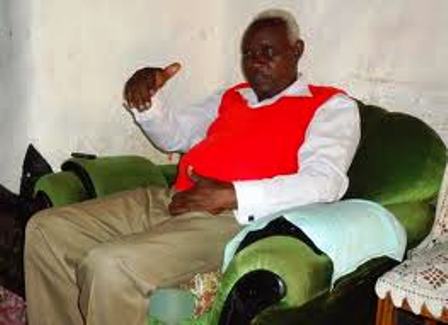 Language of the Kalenjin People in Kenya:
Language of the Kalenjin People in Kenya:The Kalenjin speak Kalenjin languages as a mother tongue. They belong to the Nilo-Saharan family.
Kalenjin also encompasses languages spoken in Tanzania (e.g. Akie) and Uganda (e.g. Kupsabiny). Due to this even broader use of the term 'Kalenjin', it is common practice in linguistic literature to refer to the languages of the Kenyan Kalenjin peoples as the Nandi languages
The Kalenjin people speak several languages that are not mutually intelligible but are linguistically closely related. Nandi and Kipsigis are the two major dialects of what is called the Kalenjin language. The Talai and Endo speak separate languages, as do the Pokoot, Sabaot and Tugen.
The Nandi, Kipsigis and Keiyo use the same Bible and similar vocabulary while the Marakwet use about half the same vocabulary, Sabaot about 1/4. With the Pokot and Ndorobo there are very few if any linguistic similarities.
The Tugen sometimes use the Kalenjin Bible, but linguists find Tugen speech so different they classify Tugen as a separate language. The Endo translation is now available.
The Kalenjin as a group are related to the Samburu and Maasai somewhat. There are linguistic as well as cultural similarities. "Subaa" (Good morning) is a word common to Kalenjin and Maasai. The Kalenjin are people of the Highland Nilote branch, while the Maasai and Samburu are Plains Nilotes.
Traditional Political Set up of the Kalenjin
The Kalenjin groups actually drew together in response to British colonial domination. The British related to each group individually. The Nandi were virtually the last ethnic group to be dominated militarily by the British.
It is from this colonial experience that the various Highland Nilote peoples consciously united to advocate their interests to the British colonial government.
Kalenjin relate well to most tribes, but there have been clashes between Kalenjin and the Luo and Kikuyu since even before independence. There are also recurrent violent clashes between the Nandi and the neighboring Maragoli. Kalenjin are very active politically.
They were active even before their son Moi was elected to the office of President. They had a voice in government with or without Moi. Kalenjin names are heard commonly in government and all areas of Kenyan life.
Traditional Customs of the Kalenjin:
The Kalenjin at one time pierced their ears, men and women alike, and then put sticks in them to stretch the lobes. They did this so that they could wear beads in their ears. Many old Kalenjin can still be recognized by their stretched earlobes. They stopped doing this for hygiene reasons.
Kalenjin love their cows and land. They grow millet, maize and now tea and sorghum.
Traditionally Kalenjins built round homes of sticks and mud plaster, with pointed thatch roofs with a pole out the center. Nowadays homes are commonly wood and stone with modern facilities, though traditional homes are still common also.
The children of Kalenjin were taught to respect elders. Even now respect is very important in the Kalenjin culture. Manners are important and men are the head of the house.
Girls were taught to kneel in front of men and weren't allowed to speak to men until they had been circumcised.
Girls were taught how to make gourds and pots for carrying water. They learned to carry firewood and look for wild vegetables. Boys were taught to care for the cattle and the boma. Boys were not allowed to sleep in the same house with their mother after the age of 5.
Traditional Religion among the Kalenjin People of Kenya:
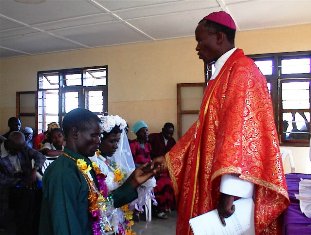 Traditional Religion among the Kalenjin People of Kenya:
Traditional Religion among the Kalenjin People of Kenya:Traditionally, the Kalenjin worshipped the sun. The word for god and sun are one and the same: Asiis. This is the name of an ancient Egyptian (Cushite) god. They would go to the mountain and worship at 5:00 a.m. and pray until the sun would rise. They worshipped the sun because it gave life.
The Kalenjin are very responsive to the Gospel and are very religious people, traditionally monotheistic. Local beer and chewing tobacco are very much ingrained in the culture and seem to be two obstacles to Kalenjin growing in a deep relationship with Christ.
Christianity and Modern Religions:
Missionaries were allowed in to work with the Kipsigis where no Europeans had settled by 1933. Missionaries of the Africa Gospel Mission pioneered the work among the Kipsigis while missionaries of the Africa Inland Mission started the work among the Nandi and Tugen. Sources estimate that about 44% of the Kalenjin people are Christians.
A small percentage of Kalenjin are Catholic while a much larger percent are claimed by Africa Gospel Church and Africa Inland Church.
American missions seem to have done really well among the large clans of the Kalenjin, although the Okiek, Sabaot and Pokot have hardly been touched with the Gospel.
Folklore among the Kalenjin People of Kenya
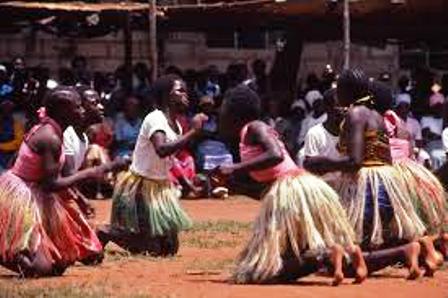 Folklore among the Kalenjin People of Kenya
Folklore among the Kalenjin People of KenyaOral tradition was and still is very important among the Kalenjin. Prior to the introduction of writing, folktales served to convey a sense of cultural history. The Kalenjin have four oral traditions: stories, songs, proverbs, and riddles.
Stories are usually about both people and animals, and certain animals are thought to have particular character traits. For example, the hare is a trickster figure whose cleverness can get him in trouble, the lion is courageous and wise, and the hyena is greedy and destructive.
Songs accompany both work and play, as well as ceremonial occasions such as births, initiations, and weddings.
Proverbs convey important messages and are often used when elders settle disputes or advise youths. Riddles involve word play and are especially popular with children.
The rite of Passage among the Kalenjin People of Kenya
For both males and females, becoming an adult in Kalenjin society is a matter of undergoing an initiation ceremony. Traditionally, these were held about every seven years. Everyone undergoing initiation, or tumdo , thereby becomes a member of a named age-set, or ipinda .
After male youths were circumcised, they were secluded for lengthy periods during which they were instructed in the skills necessary for adulthood.
Afterward, they would begin a phase of warriorhood during which they acted as the military force of the tribe. Elders provided guidance and wisdom.
Today, age-sets have lost their military function, but still provide bonds between men of the same set. Female age-sets have lost much of their importance.
In the past, only people who had borne children would be buried after death; the others would be taken out to the bush and left to be eaten by hyenas. Today all Kalenjin are buried, but not in a cemetery.
People are returned to their farm, or shamba, for burial. There is usually no grave marker, but family members, friends, and neighbors know where people are laid to rest.
Relationships among the Kalenjin People of Kenya
 Relationships among the Kalenjin People of Kenya
Relationships among the Kalenjin People of KenyaChamge or chamuge is the standard greeting among the Kalenjin. If people meet face-to-face, the spoken greeting is almost always accompanied by a hearty handshake, and people often clasp their own right elbow with their left hand.
The response is the same— chamge , sometimes repeated several times. It may be emphasized with mising, which can mean either "very much" or "close friend," depending upon the context.
As a sign of respect, a younger person greets someone of their grandparents' generation by saying, chamge kogo (grandmother) or chamge kugo (grandfather).
Holding hands after greeting is very common for people of the same sex. Even when walking, these people may hold hands or lock little fingers. There is no sexual connotation to this behavior.
People of opposite sexes are strongly discouraged from these and other public displays of affection. In their conversations Kalenjin do not point out objects or people with their fingers. Instead, they point by turning their head in the proper direction and puckering their lips briefly.
Taking leave of someone is accompanied by the farewell, sait sere (meaning literally, "blessing time"), and hearty handshakes.
Often people walk with their visitor(s) a distance in order to continue the conversation and to give their friend(s) "a push." Once again, these people often hold hands.
In the past, dating and courtship were almost entirely matters of family concern. Today, young men and women have more freedom to exercise their own choice, especially those living at boarding schools.
Young people meet and socialize at dances in town discos and in cafes called hoteli in KiSwahili.
Still, when a young man decides on a wife, he and his father's family must gather together a suitable bride price payment to be given to the bride's family.
In the past, this consisted almost entirely of livestock, but today it is becoming more common to use money in place of or in addition to livestock.
Living Conditions among the Kalenjin People of Kenya
Traditionally, Kalenjin houses were round. Walls were constructed of bent saplings anchored to larger posts and covered with a mixture of mud and cow dung; roofs were thatched with local grasses.
While these kinds of houses are still common, there is a growing trend toward the construction of square or rectangular houses built with timber walls and roofs of corrugated sheet metal.
Most Kalenjin are rural dwellers who do not have electricity or indoor plumbing. Radio/cassette players; kerosene lamps and stoves; charcoal stoves; aluminum cooking pots; plastic dishes, plates, and cups; and bicycles are the most common consumer items. Those few people who do not have electricity but who do have televisions use car batteries for power.
Family Life among the Kalenjin People of Kenya
Typically, after marriage a man brought his wife to live with him in, or very near to, his father's homestead.
Marriage of one man to multiple wives (polygyny) was and is permitted, although most men cannot afford the expense of such unions because of the burden of paying the bride price.
Regardless of the type of marriage, children were traditionally seen as a blessing from God. As a result of this, until very recently Kenya had the highest population growth rate in the world.
Monogamous marriages (one husband and one wife) now prevail and nuclear families (a man, a woman, and their children) are becoming more common.
Moreover, younger people are now expressing a desire to have fewer children when they get married. This is due to the increasing expense of having many children who not only must be fed but also educated.
To some degree, young women are also changing their aspirations, wanting careers in addition to being mothers.
Clothing of among the Kalenjin People of Kenya
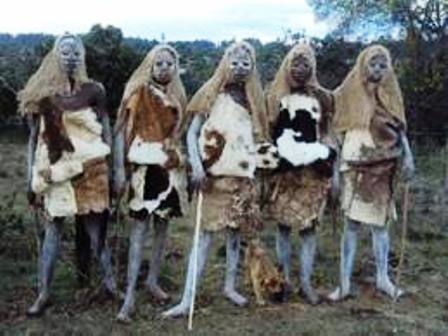 Clothing of among the Kalenjin People of Kenya
Clothing of among the Kalenjin People of KenyaTraditional Kalenjin clothing consisted of skins of either domesticated or wild animals. Earrings were common for both sexes in the past, including heavy brass coils that made the earlobe stretch down almost to the shoulder.
Today, the Western-style dress of most Kalenjin, even in rural areas, is hardly different from that of people in nearby towns.
Men wear trousers and shirts, usually with a suit jacket or sport coat. Women wear skirts and blouses, dresses, and/or khangas —locally made commercial textiles that are used as wraps (one for the top and one for the bottom).
Young people of both sexes like T-shirts with logos, especially those of American sports teams or ones bearing the likeness of famous entertainers such as Michael Jackson or Madonna.
Food among the Kalenjin People of Kenya
The staple Kalenjin food is ugali . This is a cake-like, starchy food that is made from white cornmeal mixed with boiling water and stirred vigorously while cooking. It is eaten with the hands and is often served with cooked green vegetables such as kale.
Less frequently it is served with roasted goat meat, beef, or chicken. Before the introduction and widespread diffusion of corn in recent times, millet and sorghum (native African grains) were staple cereals.
All of these grains were, and still are, used to make a very thick beer that has a relatively low alcohol content.
Another popular beverage is mursik . This consists of fermented whole milk that has been stored in a special gourd, cleaned by using a burning stick. The result is that the milk is infused with tiny bits of charcoal.
Lunch and dinner are the main meals of the day. Breakfast usually consists of tea (with milk and sugar) and leftovers from the previous night's meal, or perhaps some store-bought bread.
Meal times, as well as the habit of tea-drinking, were adopted from the British colonial period.
Lunch and dinner are both eaten late by American standards. In addition to bread, people routinely buy foodstuffs such as sugar, tea leaves, cooking fat, sodas (most often Orange Fanta and Coca-Cola), and other items that they do not produce themselves.
Traditional Education among the Kalenjin People of Kenya
Traditionally, education among the Kalenjin was provided during a period of seclusion following circumcision.
Young men and women were taught how to be a functioning and productive adult member of society. Nowadays, young men and women are still secluded after initiation, but for shorter periods (one month as compared with three months in the past).
The timing of the December school holiday coincides with the practice of initiation and seclusion.
Primary school education in Kenya is free, since no tuition is charged. However, parents must provide their children with uniforms, books, pens, pencils, and paper, as well as contribute to frequent school fundraising activities.
These expenses constitute a tremendous financial burden for families in a country where the average adult earns less than $300 per year. Post-primary school education is relatively expensive, even at the cheaper secondary schools, and entry is competitive.
Tuition at the more prestigious high schools, which are all boarding schools, is very expensive. Most parents must rely on contributions from a wide circle of family, neighbors, and friends to meet the high tuition costs. Tuition at Kenya's universities is not high, but the selection process is grueling and relatively few students who want to attend are admitted.
Cultural Heritage among the Kalenjin People of Kenya
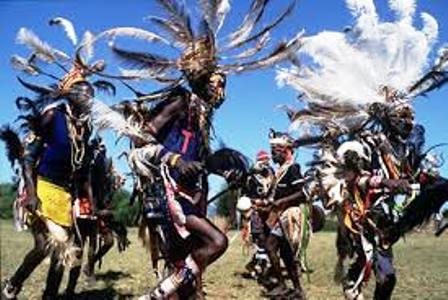 Cultural Heritage among the Kalenjin People of Kenya
Cultural Heritage among the Kalenjin People of KenyaTraditionally, music and dance served many functions. Songs accompanied many work-related activities, including, for men, herding livestock and digging the fields, and, for women, grinding corn, washing clothes, and putting babies to sleep (with lullabies).
Music was also an integral part of ceremonial occasions such as births, initiations, and weddings. Dances for these occasions were performed while wearing ankle bells and were accompanied by traditional instruments such as flutes, horns, and drums.
Employment among the Kalenjin People of Kenya
Most Kalenjin make a living by cultivating grains such as sorghum and millet (and more recently corn), and raising cattle, goats, and sheep. Farming and raising animals tend to be separate activities since grazing land is usually located a distance from the fields and homesteads.
In Kalenjin societies, much of the work, is traditionally divided along gender lines. Men are expected to do the heavy work of initially clearing the fields that are to be used for planting, as well as turning over the soil. Women take over the bulk of the farming work, including planting, weeding, harvesting (although men tend to pitch in), and processing crops.
Women are also expected to perform nearly all of the domestic work involved in running a household. Men are supposedly more involved with herding livestock than with other pursuits. However, when men are engaged in wage labor away from home, women, children (especially boys), and the elderly care for animals just as often as men.
Athletic prowess of the Kalenjin People
The Kalenjin have been called by some "the running tribe." Since the mid-1960s, Kenyan men have earned the largest share of major honors in international athletics at distances from 800 meters to the marathon; the vast majority of these Kenyan running stars have been Kalenjin.
From 1980 on, about 40% of the top honors available to men in international athletics at these distances (Olympicmedals, World Championships medals, and World Cross Country Championships honors) have been earned by Kalenjin.
In recent years, Kenyan women have become a major presence in international athletics at the distances; most of these women are also Kalenjin.
Amby Burfoot of Runner's World, stated that the odds of Kenya achieving the success they did at the 1988 Olympics were below 1: 160 billion. Kenya had an even more successful Olympics in 2008; documented in Toby Tanser's 'More Fire' book; How to run the Kenyan Way.
Recent Articles
-
Garam Masala Appetizers ,How to Make Garam Masala,Kenya Cuisines
Sep 21, 14 03:38 PM
Garam Masala Appetizers are originally Indian food but of recent, many Kenyans use it. Therefore, on this site, we will guide you on how to make it easily. -
The Details of the Baruuli-Banyara People and their Culture in Uganda
Sep 03, 14 12:32 AM
The Baruuli-Banyala are a people of Central Uganda who generally live near the Nile River-Lake Kyoga basin. -
Guide to Nubi People and their Culture in Kenya and Uganda
Sep 03, 14 12:24 AM
The Nubians consist of seven non-Arab Muslim tribes which originated in the Nubia region, an area between Aswan in southern
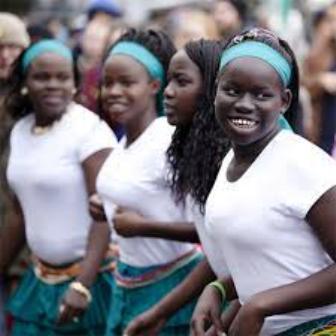
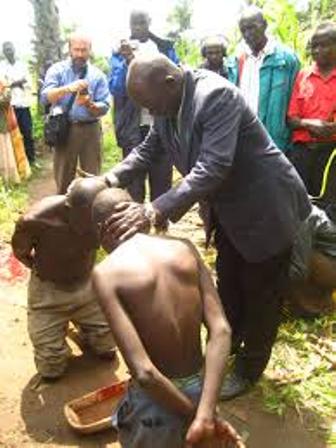
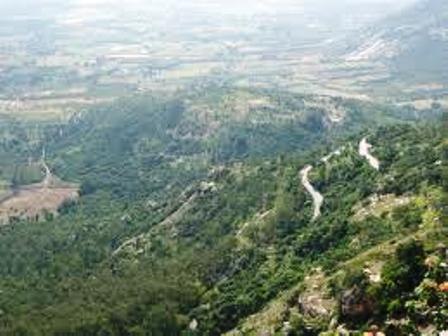
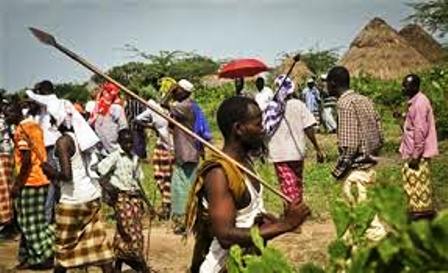
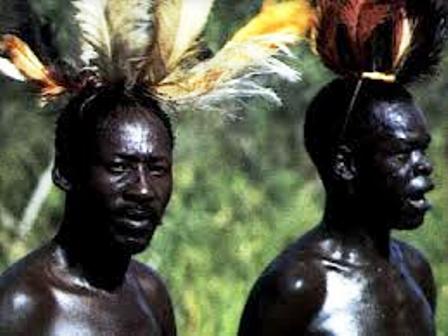
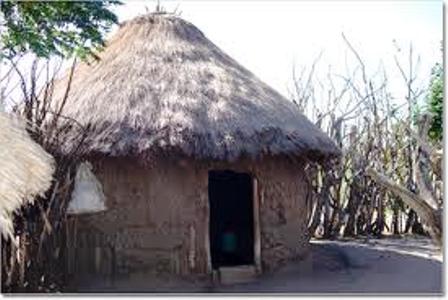
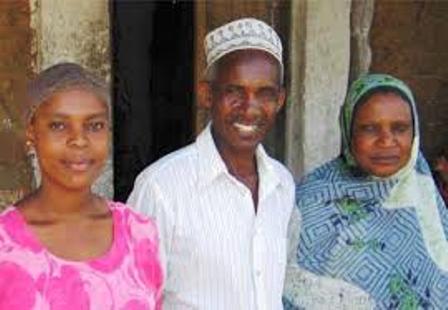
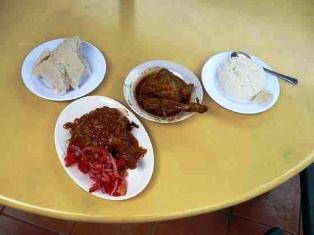
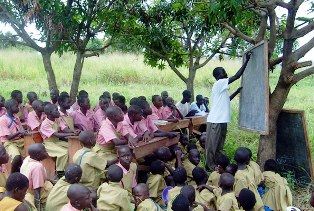
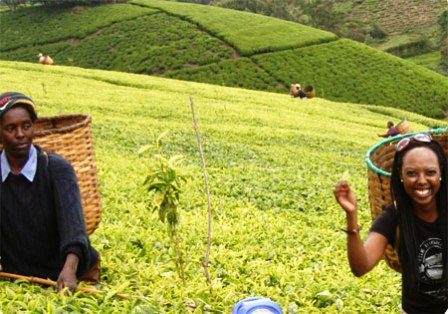
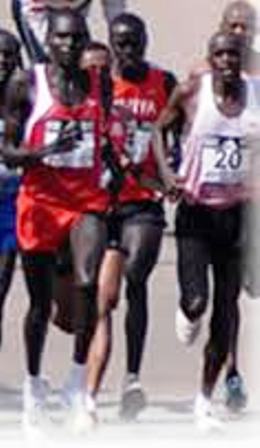







New! Comments
Have your say about what you just read! Leave me a comment in the box below.